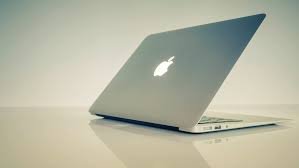Is your once-speedy laptop now taking ages to load even the simplest tasks? Fear not, fellow techie! This blog post offers a How to Speed Up Your Laptop guide to tackling the sluggishness and restoring your laptop’s former glory.

Part 1: Diagnose the Problem
Before diving into solutions, a quick diagnosis can help target the root cause of the slowdown. Here are some pointers:
- Resource Overload: Check your Task Manager (Windows) or Activity Monitor (Mac) to see if any programs are hogging CPU, memory, or disk usage.
- Startup Programs: Unnecessary programs running at startup can slow down boot times.
- Full Storage: A cluttered hard drive can significantly impact performance.
- Outdated Software: Outdated operating systems and applications can lead to compatibility issues and performance bottlenecks.
Table of Contents: How to Speed Up Your Laptop
Part 2: Solutions to Get How to Speed Up Your Laptop
General Housekeeping:
- Close Unnecessary Programs: Regularly end processes that you’re not actively using.
- Disable Startup Programs: Remove any programs that don’t require immediate startup from the startup menu (accessible in Settings/System Configuration).
- Clear Temporary Files: Use the built-in disk cleanup tool (Windows) or similar utilities (Mac) to remove temporary files and clutter.
- Uninstall Unused Software: Free up space and potentially remove hidden resource-draining programs.
Optimizing Performance:
- Disk Cleanup: Defragment your hard drive (Windows) or optimize storage (Mac) to improve file access speed.
- Update Software: Ensure you have the latest updates for your operating system, drivers, and applications. Updated software often addresses performance issues and security vulnerabilities.
Advanced Measures:
- Antivirus Scan: Run a thorough scan for malware or viruses that might be affecting system performance.
- Hardware Check: If the slowdown persists, consider hardware limitations. Upgrading RAM or replacing a failing hard drive with a solid-state drive (SSD) can significantly improve performance.
Additional Tips:
- Reduce Visual Effects: Lowering screen resolution and disabling unnecessary animations can improve performance, especially on older laptops.
- Consider Cloud Storage: Move large files to cloud storage services to free up space on your local drive.
Part 3: Professional Help
If the above steps don’t resolve the issue, consider seeking professional help from a qualified computer technician. They can diagnose hardware problems, perform a deep clean, or suggest potential hardware upgrades.
Remember: Consistent maintenance is key to a healthy and speedy laptop. By following these steps and incorporating them into your routine, you can keep your device running smoothly for years to come.
FAQ: Diagnose and Fix a Slow Laptop
Q: My laptop is slow! What could be the problem?
- A: Several factors can contribute to a sluggish laptop:
- Resource overload: Programs using too much CPU, memory, or disk space.
- Startup programs: Unnecessary programs launching at startup slow down boot times.
- Limited storage: A full hard drive hinders performance.
- Outdated software: Older operating systems and applications can have compatibility issues and slowdowns.
Q: How can I fix a slow laptop?
- A: Try these steps:
- General housekeeping:
- Close unused programs.
- Disable unnecessary startup programs.
- Clear temporary files.
- Uninstall unused software.
- Optimize performance:
- Run disk cleanup (Windows) or optimize storage (Mac).
- Update software (OS, drivers, applications).
- Advanced measures:
- Scan for malware.
- Consider hardware limitations (RAM upgrade, SSD swap).
- General housekeeping:
Q: When should I seek professional help?
- A: If the above steps don’t resolve the issue, consult a professional for:
- Diagnosing hardware problems.
- Performing a deep clean.
- Suggesting hardware upgrades.
Advanced Tip:
- Reduce strain on your machine:
- Lower screen resolution.
- Disable unnecessary animations (Settings > System > Advanced > Performance).
- Move large files to cloud storage.
Bonus Tip: Care for Your Laptop
- Regular Backups: Before making significant changes, back up your data to prevent accidental loss.
- Consistent Maintenance: Regularly perform the recommended cleaning and optimization steps to keep your laptop running smoothly.
- Dust Buildup: Clean dust vents occasionally to prevent overheating and performance issues.
By following these tips and incorporating them into your routine, you can extend the lifespan and performance of your laptop.



